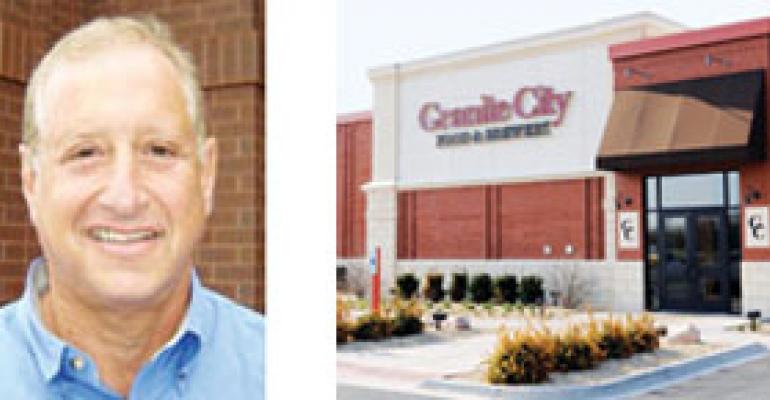When Granite City Food & Brewery last month unveiled its restructured balance sheet, it was far from traditional.
The final deal for a $15 million debt-to-equity swap was inked with the 26-unit casual-dining chain’s landlords, developers and main creditor, DHW Leasing LLC, which had lent Granite City money for furniture, fixtures and equipment. The parties’ agreement will eliminate $15 million in debt, save about $19 million in principal and interest payments over five years, and improve Granite City’s cash flow.
“We learned early on as we went out to seek financing that our options were pretty limited,” says Steve Wagenheim, Granite City’s chief executive. “When options become minimal, we decided that people will have to start talking.”
As the Minneapolis-based company and others have discovered, in the new world of restaurant financing the number of active lenders has dwindled to a few and the terms of any deal have gotten stiffer. For operators, this means looking to alternative sources for growth capital until 2011 at the earliest, observers say.
“We think it’s going to be nine months to a year before you start seeing announcements of significant lending,” says Robert S. Hersch, president of middle-market investment bank Mastodon Ventures Inc. in Austin, Texas. Mastodon currently is working with Good Times Restaurants Inc., the Colorado-based quick-service company, and Bar Louie, a Chicago-based casual-dining firm.
The banks, national lenders and restaurant-specific capital sources that shut off their lending spigots when the financial markets crashed last October are rebuilding, but slowly and with much regulation from Washington. Private-equity firms, which a few years ago snatched up many restaurant assets, also have moved to the sidelines.
In the meantime, alternative funding sources include regional banks not caught up in federal regulatory issues or with overloaded balance sheets and landlords who are looking to develop projects, Hersch says. He notes that such deals will require more equity, up to 50 percent, and strong unit-level performance.
Larger banks will only return to the industry when restaurant performance begins to improve, he says. Until then, bankers will be looking at same-store sales metrics, consumer confidence trends, real estate market values, and anything else that could affect consumer behavior, such as gas prices.
The perception of an industry turnaround matters most, Hersch notes, so a return to positive same-store sales, even at lower traffic levels, could help the industry as early as the fourth quarter of 2009.
“It will take lender confidence, comp sales that are positive or flat, and a reevaluation of underlying real estate portfolios,” Hersch says. “It’s a slow process; it doesn’t just revert to 2007 levels.”
For Granite City, which had $15 million in debt coming due and the same slowed sales as its casual-dining brethren, the need for capital meant getting creative.
As part of the debt-for-equity swap, DHW Leasing will receive 28 million shares of stock, giving it a 64-percent majority stake in Granite City. The deal also allows Granite City to buy back a portion of the shares issued to DHW if the company’s share price significantly appreciates during the first year after the deal’s close.
After restructuring, which also includes rent concessions and reductions, Granite City expects to book surplus cash for the first time in its 10-year history.
“Frankly, in our view, it’s a game changer,” Wagenheim says. “To say this agreement represents a highly unusual and constructive relationship in the industry is an understatement.”
Other fast-growing restaurateurs aren’t willing to wait for traditional lenders to step back into the game, either.
Subway, the Milford, Conn.-based sandwich chain that has grown by hundreds of units in recent years, has plans to overtake McDonald’s as the world’s largest restaurant chain in terms of outlets. To get there, franchisees like Hardy Grewal, chief executive of OhCal Foods LLC in Los Angeles, need money to grow. He found it at California Bank & Trust, a regional bank serving California.
Grewal notes that national players, like GE Capital or Bank of America, once the most active lenders to the industry, were not open to his growth story. OhCal Foods is parent to about 950 locations now and plans to hit 1,000 by the end of the year.
“It’s pretty bad out there, [most] guys are closed—and we’re Subway, there’s not much failure there,” Grewal says. “We don’t see a loosening until the end of 2010 or early 2011.… It’s the regional players working. If I didn’t have the California Bank & Trust relationship…”
He let his comments trail, explaining that his relationship with the regional bank resulted in a $12.4 million loan that will help him purchase a headquarters building in Los Angeles and continue to open units through his master franchise contract at a pace of nearly one store per week— [email protected]





